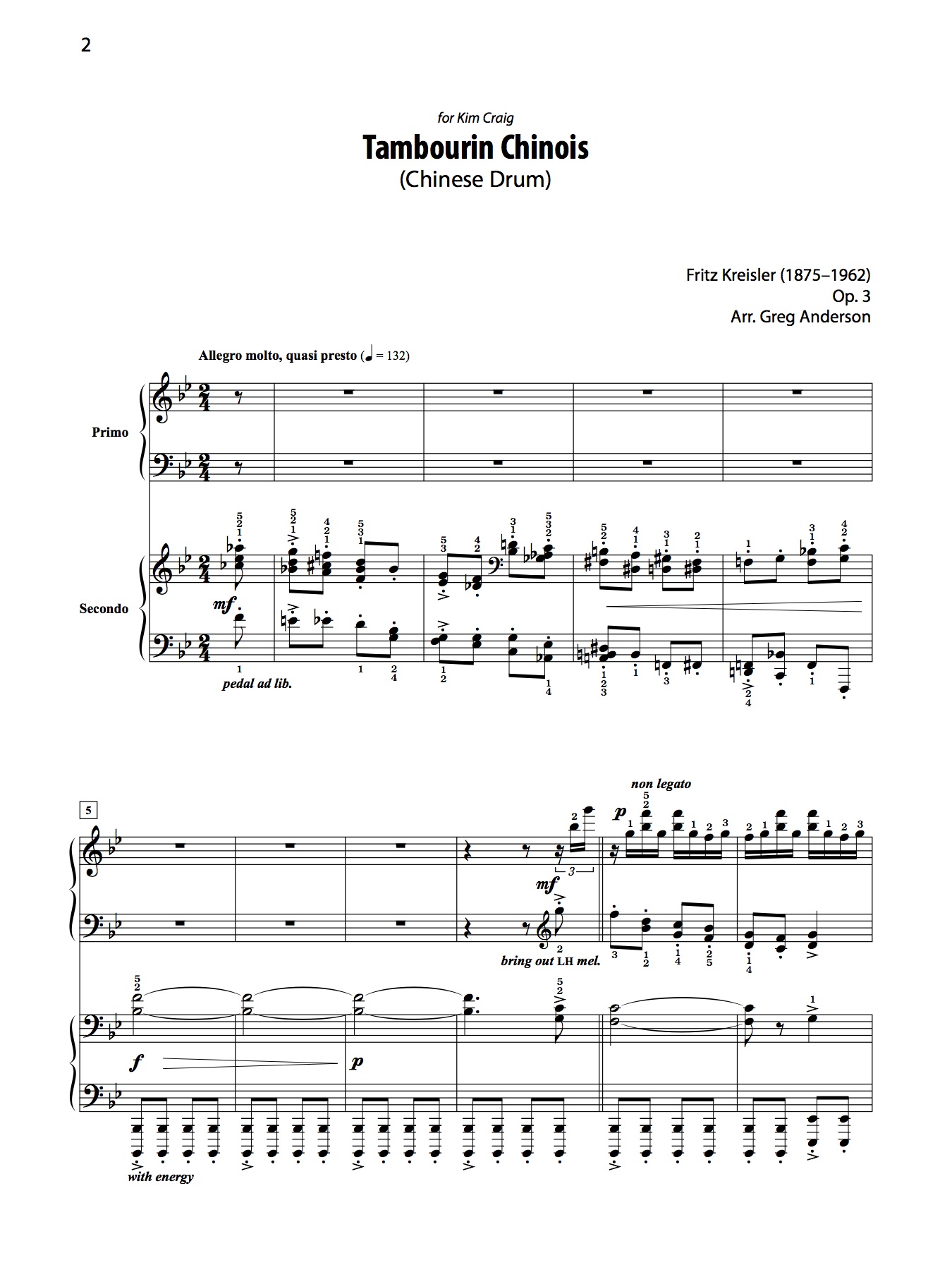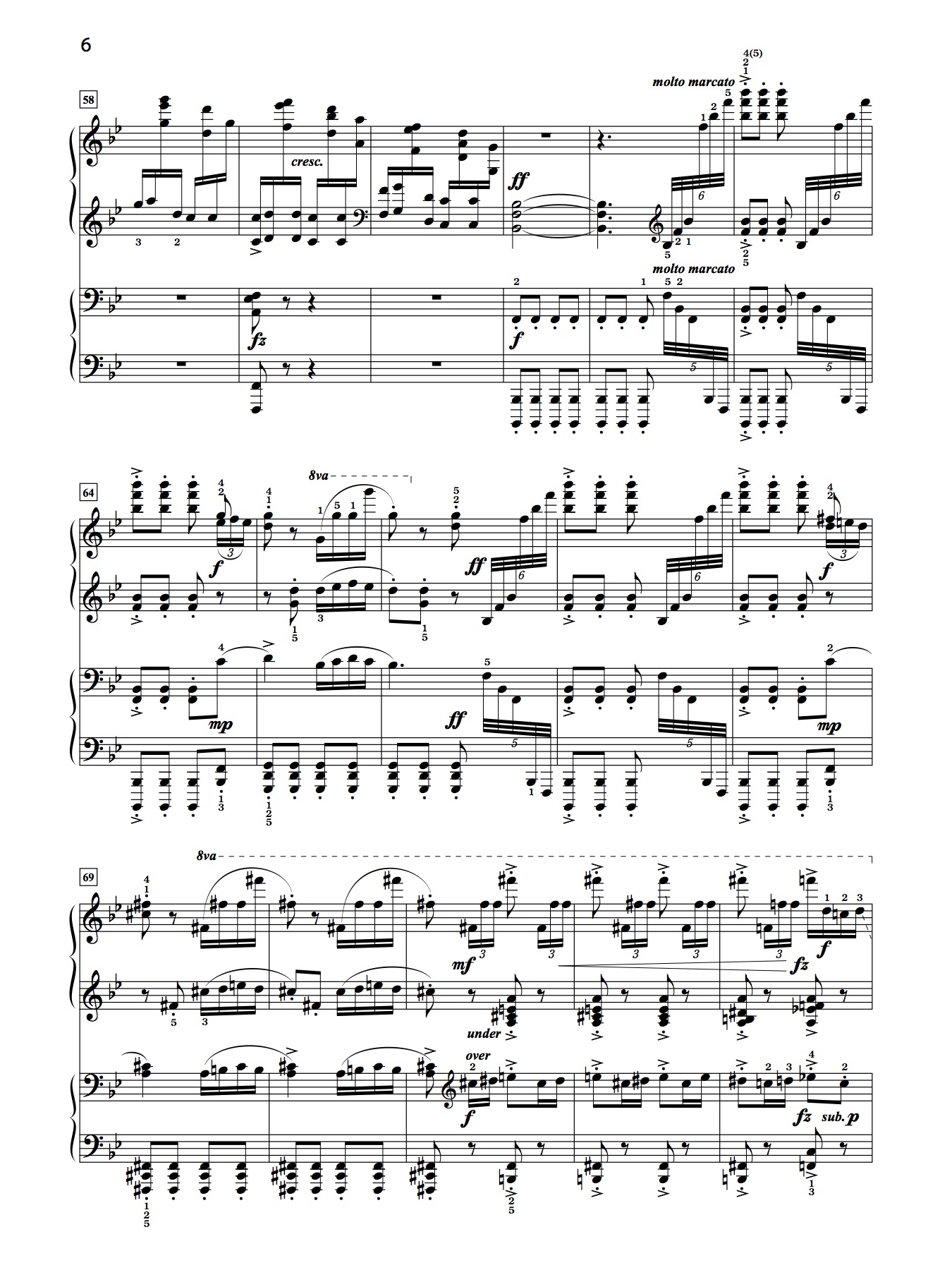Tambourin Chinois
“I don’t mind telling you that I enjoyed very much writing my Tambourin Chinois. The idea for it came to me after a visit to the Chinese theater in San Francisco—not that the music there suggested any theme, but it gave me the impulse to write a free fantasy in the Chinese manner.”
Regarded as one of the greatest violinists of all time, Fritz Kreisler composed dozens of short works for violin and piano to perform on his recitals. Many of these musical delicatessens evoke sentiment for the cozy lifestyles of pre-war Vienna; others venture to imitate the style of historical composers such as Pugnani, Tartini, and Vivaldi.
Audiences of the day likely heard Tambourin Chinois, composed in 1910, as avant-garde new music by a composer experimenting with exotic musical forms. But other than its use of the pentatonic scale or occasional parallel fifths, Tambourin Chinois has little to do with actual Chinese music—not surprising, considering Kreisler had such limited exposure to genuine examples of the country’s culture and traditions. In the end, the cultural authenticity is beside the point; the piece is a joyous and delightful musical gem, a celebration of imagined worlds and faraway lands, and a reminder that we all perceive differently the world around us.
Similarly, we make no pretense to faithfully recapture the exactitudes of the original in this arrangement for piano duet; it represents our own, personal reaction to Kreisler’s Tambourin Chinois. We’ve replaced the excitement of violinists’ wildfire tempo with an increased complexity (but slower pace) as the pianists exchange in a musical—and physical—banter. One of our more acrobatic arrangements, the pianists are literally asked to recreate the playfulness of the music through dance-like interaction, and it is our hope that as pianists learn the piece, the struggles of coordination will lead to fits of laughter (as opposed to feelings of malice!).
— Greg Anderson & Elizabeth Joy Roe
$5.99
Tambourin Chinois (Chinese Drum), Op. 3
by Fritz Kreisler
arranged for piano, four-hands by Greg Anderson
advanced
Purchase the sheet music on Sheet Music Plus


